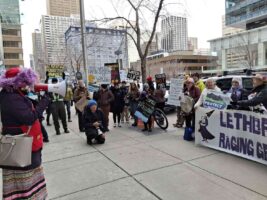The ACT recorded an 18 per cent fall in greenhouse gas emissions in the 2018-19 year, as the territory’s wind and solar supplies come online.
But a tougher challenge now looms for the ACT, as it now looks to tackle emissions in the transport, waste and gas sectors, on its path towards meeting its zero net emissions target.
The ACT’s emissions fell to 2.57 million tonnes in the 2018-19 year, with the share of renewable electricity supplying the capital growing to more than two-thirds in the year, pushing total greenhouse emissions down by more than 35 per cent from where they were in 2014-15.
Following the significant fall in electricity emissions, transport emissions now represent the largest source of greenhouse gas emissions in the ACT, representing just less than half of all emissions produced in the territory.
The cuts in emissions have been achieved alongside strong population growth in Canberra, with per capita emissions almost halving from their 1990 levels of 10.53 tonnes per capita in 1990 to just 6.02 tonnes per capita in 2018-19.
The cuts have largely been achieved by the ACT’s shift to purchasing 100 per cent of its electricity from renewable sources, a target it has now met, with electricity use previously representing more than 40 per cent of the ACT’s emissions footprint.
The ACT led Australian states and territories in securing power purchase agreements with a series of new wind and solar farms to supply the territory with power, including seven wind farms and four large-scale solar farms.
The last of the wind farms, the Hornsdale Stage 3 wind farm in South Australia, came online last year and will see the ACT virtually eliminate the greenhouse gas footprint of its electricity consumption.
But without a widely available direct substitute for transport fuels yet to reach the market, achieving reductions in transport emissions can be a harder challenge for governments, compared to switching electricity supplies to renewable sources.
“With the ACT achieving 100 per cent renewable electricity from 1 January 2020, the pathway to net zero emissions will need to focus on the remaining sectors, especially transport, gas and waste. These sectors are likely to be more challenging and will require greater involvement from the community,” ACT climate change minister Shane Rattenbury said.
“With the majority of transport emissions coming from private car travel, it is essential that we improve the movement of people around our city, especially by increasing public transport and active travel, and reducing reliance on private car travel,” Rattenbury added.
The ACT has successfully introduced a new electric light rail service, which runs through the city’s northern suburbs and into the central business district.
With the last of the ACT’s renewable energy projects coming online in October last year, successfully taking the ACT’s supplies to 100 per cent sourced from wind and solar, it should be on track to meet its 2020 target of reducing emissions by more than 40 per cent on 1990 levels.
The challenge for the ACT government now is to tackle emissions in the other sectors, including transport, waste and industrial processes, that represent the bulk of the ACT’s remaining greenhouse gas emissions footprint.
The ACT government has already made moves to start moving ACT households and businesses away from using gas as for cooking, hot water and heating homes.
The ACT government has lifted previously mandatory requirements for all new homes to be connected to the mains gas network and will provide financial incentives for households to replace appliances with energy efficient electric alternatives.
By shifting these energy uses on to the electricity system, the ACT can strategically reduce its emissions by drawing upon its supplies of 100 per cent renewable electricity.
“Residential customers account for well over half of total consumption. There are good opportunities to reduce these emissions, for example through the expanded use of highly efficient electrical appliances as an alternative to gas appliances,” Rattenbury said.
“The ACT Climate Change Strategy sets out actions the ACT Government will support this; in particular, developing a new Sustainable Energy Policy and a plan to reduce emissions from gas to zero by 2045.”
All state and territory jurisdictions have now adopted targets of achieving net zero emissions by 2050 or earlier, despite the federal government continuing to lag behind with lacklustre targets.
It has been these policies that have driven renewable energy adoption to new record levels, which has helped to drive down wholesale electricity prices across Australia.
RenewEconomy and the Smart Energy Council will be co-hosting a “virtual conference” on May 6, focusing on a renewables-led economic recovery, featuring industry leaders, analysts and advocates. More information and registration here.
RenewEconomy and its sister sites One Step Off The Grid and The Driven will continue to publish throughout the Covid-19 crisis, posting good news about technology and project development, and holding government, regulators and business to account. But as the conference market evaporates, and some advertisers pull in their budgets, readers can help by making a voluntary donation here to help ensure we can continue to offer the service free of charge and to as wide an audience as possible. Thank you for your support.











